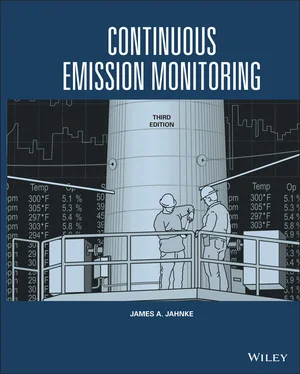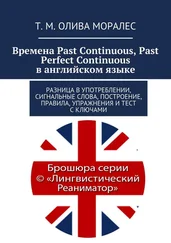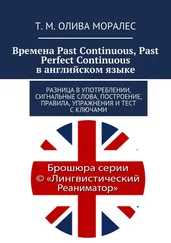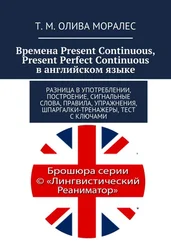James A. Jahnke - Continuous Emission Monitoring
Здесь есть возможность читать онлайн «James A. Jahnke - Continuous Emission Monitoring» — ознакомительный отрывок электронной книги совершенно бесплатно, а после прочтения отрывка купить полную версию. В некоторых случаях можно слушать аудио, скачать через торрент в формате fb2 и присутствует краткое содержание. Жанр: unrecognised, на английском языке. Описание произведения, (предисловие) а так же отзывы посетителей доступны на портале библиотеки ЛибКат.
- Название:Continuous Emission Monitoring
- Автор:
- Жанр:
- Год:неизвестен
- ISBN:нет данных
- Рейтинг книги:4 / 5. Голосов: 1
-
Избранное:Добавить в избранное
- Отзывы:
-
Ваша оценка:
- 80
- 1
- 2
- 3
- 4
- 5
Continuous Emission Monitoring: краткое содержание, описание и аннотация
Предлагаем к чтению аннотацию, описание, краткое содержание или предисловие (зависит от того, что написал сам автор книги «Continuous Emission Monitoring»). Если вы не нашли необходимую информацию о книге — напишите в комментариях, мы постараемся отыскать её.
The new edition of the only single-volume reference on both the regulatory and technical aspects of U.S. and international continuous emission monitoring (CEM) systems Continuous Emission Monitoring
Continuous Emission Monitoring:
Continuous Emission Monitoring, Third Edition
Continuous Emission Monitoring — читать онлайн ознакомительный отрывок
Ниже представлен текст книги, разбитый по страницам. Система сохранения места последней прочитанной страницы, позволяет с удобством читать онлайн бесплатно книгу «Continuous Emission Monitoring», без необходимости каждый раз заново искать на чём Вы остановились. Поставьте закладку, и сможете в любой момент перейти на страницу, на которой закончили чтение.
Интервал:
Закладка:
Like an automobile, where the oil must be changed and the tires rotated, a CEM system requires routine checks and replacements. QA programs incorporating daily and weekly checks, periodic audits, and preventive maintenance procedures have been found to be the key to continuing CEM system operation. Systems with such programs today show better than 98% data availability.
APPLICATION
CEM systems were originally required by regulatory agencies in the United States for monitoring the effectiveness of air pollution control equipment in removing pollutants from flue gases. As indicators of control equipment performance, the data could be used to track plant performance and target sources that were not meeting their emission limitations. Manual source tests would then be conducted on targeted sources to determine if, indeed, they were failing to be in compliance with emission limitations.
However, the extension of CEM data to direct enforcement applications has grown in both federal and state programs. By stating specifically in a rule or permit that a CEM system provides enforceable data that determines if an emission limit is being met or exceeded, the earlier link to control equipment performance is not as important. In addition, the promulgation of the “credible evidence” rule now allows the use of CEM system data in litigation.
CEM systems also provide the basis for the U.S. EPA acid rain control program mandated in the 1990 Clean Air Act Amendments. Here, CEM systems determine the “allowances,” the number of tons per year of SO 2emissions that are traded between the electrical utilities. This successful regulatory program has led to significant SO 2reductions in the United States within two years of its implementation. The over 2000 utility CEM systems installed to track allowances have contributed much to this success, providing an accurate database necessary to instill confidence in the trading market.
Another trading program is found in the Cross‐State Air Pollution Rule, where NO xemissions are traded between electrical utilities and other sources in the northeastern states. These regulatory programs as well as economic forces led to an 89% decrease in SO 2emissions and an 82% decrease in NO xemissions from 1995 to 2017.
Although emission monitoring systems have been applied principally to satisfy such regulatory requirements, CEM system data can also be used proactively by plant and corporate management by providing a base of information on compliance status or for consideration in legal issues. As a result of both agency environmental programs and proactive source monitoring, the CEM database provides assurance to the public that emissions are being monitored to address environmental concerns.
However, the essential purpose of CEM systems should not be forgotten when providing for the timely submission of emissions reports. That purpose is to use CEM system data to control plant operations to meet emissions limitations ( Figure 1‐3). The continuous record of emissions data enables plant operators and engineers to optimize plant performance and control equipment operation. On a continuous basis, emissions can then be maintained within regulated limits. In some cases, operating costs can be reduced and data can be gathered for plant design and maintenance information. In sum, the focus should not be on the quarterly emissions report, but rather, on how to use the data to improve operational efficiencies to minimize emissions.
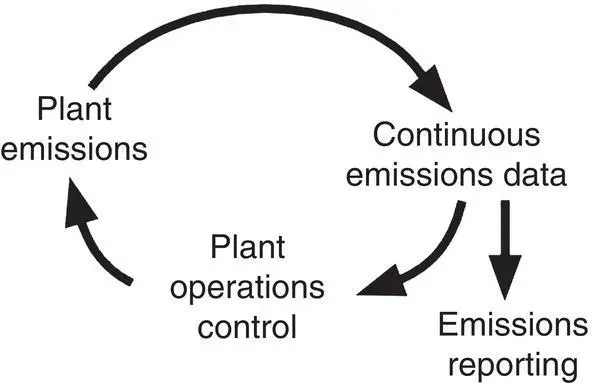
Figure 1‐3 Industry uses of CEM system data.
SUMMARY
The technology of continuous emissions monitoring has not been static. The use of CEM systems for allowance trading programs and emissions enforcement programs, the demands for increased system availability, and advances in data handling and reporting have led to more sophisticated systems with better reliability. CEM systems have advanced considerably over 50 years of development, with improved sampling techniques, analyzers, and data processing systems being integrated into today’s systems to meet the challenges posed by new requirements. Also, by implementing CEM system quality assurance programs and by properly managing the monitoring programs, high system availability can be achieved. This high availability is a necessity today, where inaccurate data or missing data can incur both regulatory and economic penalties.
BIBLIOGRAPHY
1 Air Pollution Control Association (1981). Proceedings – Continuous Emission Monitoring: Design, Operation and Experience. SP‐43. Pittsburgh: AWMA.
2 Air Pollution Control Association (1986). Transactions – Continuous Emission Monitoring – Advances and Issues. TR‐7. Pittsburgh: APCA.
3 Air Pollution Control Association (1990). Proceedings – Continuous Emission Monitoring – Present and Future Applications. SP‐71. Pittsburgh: AWMA.
4 Air Pollution Control Association (1993). Continuous Emission Monitoring – A Technology for the 90s. SP‐85. Pittsburgh: AWMA.
5 Air Pollution Control Association (1995). Acid Rain & Electric Utilities – Permits, Allowances, Monitoring & Meteorology. VIP‐46. Pittsburgh: AWMA.
6 Air Pollution Control Association (1996). Continuous Compliance Monitoring Under the Clean Air Act Amendments. VIP‐58. Pittsburgh: AWMA.
7 Air Pollution Control Association (1997). Acid Rain & Electric Utilities II. Pittsburgh: AWMA.
8 Baumbach, G. (1996). Air Quality Control: Formation and Sprces, Dispersion Characteristics and Impact of Air Pollutants ‐ Measuring Methods. Techniques for Reduction of Emissions and Regulations for Air Quality Control. Springer. Berlin.
9 Baukal, C.F. (2011). Industrial Combustion Testing. Boca Raton: CFC Press.
10 Central Pollution Control Board (CPCP) (2018). Guidelines for Continuous Emission Monitoring Systems. Revision‐01. Delhi, India. Central Pollution Control Board. http://www.indiaenvironmentportal.org.in(accessed 3 June 2021).
11 Cohn, P.E. (2006). Analisadores Industriais. Rio de Janeiro: Instituto Brasileiro de Petróleo e Gás. Editora Interciência Ltda.
12 Curtis, D., Averdieck, W., Kanchan, S.K., and Parre, A.A. (2018). CEMS: Continuous Emission Monitoring System: A Technical Guidance Manual. New Delhi: Centre for Science and Environment.
13 Down, R.D. and Lehr, J.H. (ed.) (2004). Environmental Instrumentation and Analysis Handbook. Wiley.
14 Electric Power Research Institute (1993). Continuous Emissions Monitoring Guidelines: 1993 Update. Report No. EPRI TR‐102386 V1 & V2. Palo Alto, CA: EPRI.
15 Environment Canada (2005). Protocols and Performance Specifications for Continuous Monitoring of Gaseous Emissions from Thermal Power Generation. EPS 1/PG/7. Ottawa: Environment Canada.
16 European Commission (2017). Guidance Document. The Monitoring and Reporting Regulation – Continuous Emissions Monitoring Systems (CEMS). European Commission Directorate General Climate Action. https://ec.europa.eu/clima/sites/clima/files/ets/monitoring/docs/gd7_cems_en.pdf(accessed 3 June 2021)
17 Federal Ministry of the Environment, Nature Conservation and Nuclear Safety (2008). Air Pollution Prevention Manual on Emission Monitoring. Research Report 360 16 004 UBA – FB 001090. Dessau‐Rosslau, Germany. Federal Environment Agency.
18 Indiana Department of Environmental Management (IDEM) (2017). Compliance Branch Guidance Manuals. CEMS/COMS, Forms and Information and Guidance. Indiana Department of Environmental Management Office of Air Quality – Compliance. www.in.gov/idem/airquality(accessed 3 June 2021).
Читать дальшеИнтервал:
Закладка:
Похожие книги на «Continuous Emission Monitoring»
Представляем Вашему вниманию похожие книги на «Continuous Emission Monitoring» списком для выбора. Мы отобрали схожую по названию и смыслу литературу в надежде предоставить читателям больше вариантов отыскать новые, интересные, ещё непрочитанные произведения.
Обсуждение, отзывы о книге «Continuous Emission Monitoring» и просто собственные мнения читателей. Оставьте ваши комментарии, напишите, что Вы думаете о произведении, его смысле или главных героях. Укажите что конкретно понравилось, а что нет, и почему Вы так считаете.
